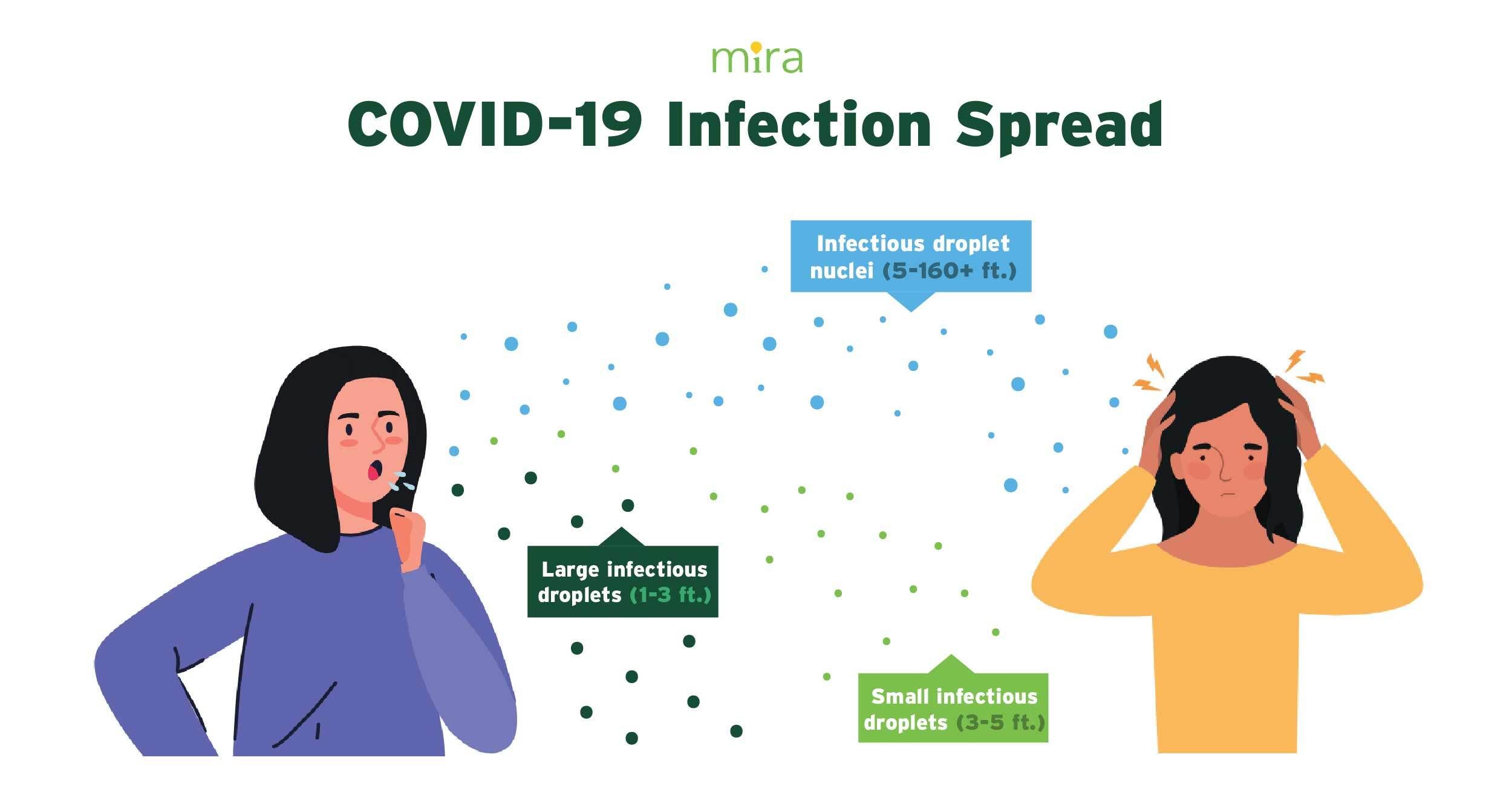How Long Is COVID-19 Contagious?
COVID-19 is spread through aerosol droplets when we breathe, speak or sing. The virus can be transmitted even if someone is asymptomatic. If you believe you have COVID-19 or had an exposure, you should immediately isolate yourself from others and seek a PCR or rapid antigen test. If you had COVID-19, you could be around others if 10 days have passed since your first symptoms, symptoms are improving, AND you have had no fever for at least 24 hours without taking fever-reducing medications.
A membership with Mira can help you get access to a free at-home PCR test.
How COVID-19 Spreads
The SARS-CoV-2 virus initially infects, replicates, and spreads from the nose and the mouth. Whenever one breathes, speaks, coughs, or sneezes, we produce turbulent airflow in the upper respiratory mucosa. Through the production of a shearing force, this airflow creates microscopic respiratory droplets and aerosols that are emitted from the nose and mouth into the surrounding air. When you are infected, viral particles are captured within these droplets and aerosols.
Depending upon their size, droplets will often follow a ballistic trajectory subject to gravity and fall to the ground within a few seconds. Often 10 microns or less, aerosols are commonly caught in air currents and may float or drift for hours. When an infected person emits these particles, they may land in the nose or mouth of infected persons. An uninfected person may also inhale them into the deeper respiratory tree. Spread can also occur through contact with objects that harbor the virus.

How Contagious is COVID-19
Researchers say that, on average, every person who has COVID-19 will pass it on to 2 or 2.5 others. One study says that number is even higher, with one sick person infecting between 4.7 and 6.6 others.
By comparison, someone who has the flu will probably give it to an average of 1.1 to 2.3 others. But one person with measles might spread it to 12 to 18 others. Although children tend to get infected with the coronavirus less often and have milder symptoms than adults, they can still catch and spread it.

Get affordable doctor copay without paying insurance premiums
Join 39,000 people and get Mira, the best alternative to traditional insurance. Enroll and use immediately. Plans start at only $45/mo.
Alyssa is a Senior Marketing Associate & Content Writer at Mira. She is passionate about educating others on how to affordably access healthcare.
